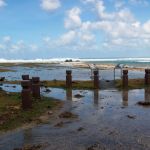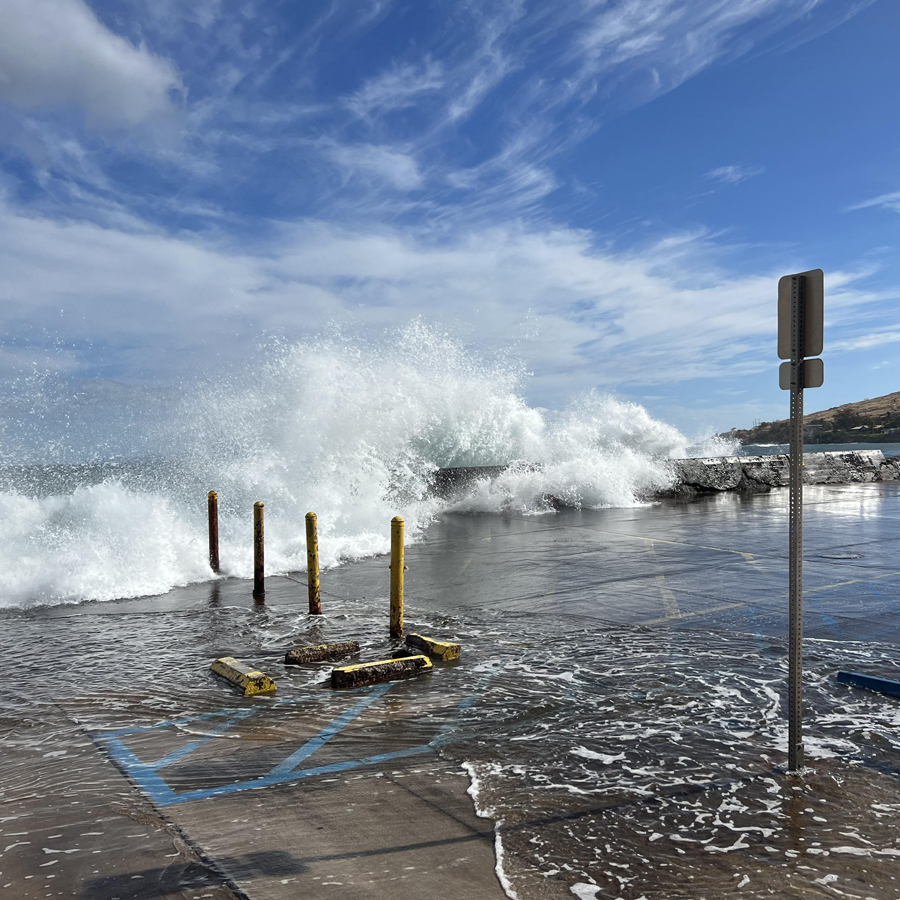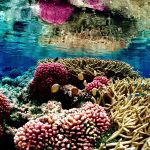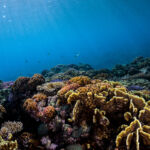COASTAL HAZARDS

2024 SURF Projects
Four students completed projects in climate adaptation science for the 2024 SURF program, investigating the effects of ocean warming on cleaner wrasse behavior, finding the best soil amendments for encouraging native Hawaiian plant regeneration, modeling the optimal pathway for using the RAD framework on Hawaiʻi biomes, and using non-intrusive methods to investigate climate effects of coral growth rates.

HERA: Impact of Sea Level Rise and Storms on Coastal Flooding Hazards
The USGS HERA-Impact of Sea Level Rise and Storms on Coastal Flooding Hazards tool provides important scientific information for decisionmakers throughout the Pacific to plan for future coastal flooding events.

American Samoa Sea Level Rise Viewer
This interactive web tool provides access to sea-level rise information for decisionmakers and community members to plan for the impacts of rising sea levels in American Samoa.

Pacific Islands Sea Level Rise Project Explorer
Sea-level rise impacts are prevalent throughout the Pacific, as is the research to adapt to those impacts. This new interactive tool compiles information about SLR projects in one place to help avoid duplication of efforts and encourage collaborations for future work.

2023 SURF Projects
Four students completed projects in climate adaptation science for the 2023 SURF program, investigating how forests vegetation shifts in response to climate change, the connection between climate and humpback whale health, whether added nutrients can improve coral thermal resilience, and sea-level rise impacts to community infrastructure.

Unlocking reef resilience drivers to inform Pacific coral reef management
PI: Megan Donahue, Marine Researcher, HIMB, UH Mānoa
Co-PIs: Jessica Glazner, Dept of Marine Biology, UH Mānoa; Chad Wiggins, Palmyra Program Director, The Nature Conservancy
Funded: FY2022
Co-PIs: Jessica Glazner, Dept of Marine Biology, UH Mānoa; Chad Wiggins, Palmyra Program Director, The Nature Conservancy
Funded: FY2022

Developing a Pacific mangrove monitoring network (PACMAN) in response to sea-level rise
PI: Richard Mackenzie, Research Ecologist, USDA FS Pacific Southwest Research Station
Co-PI: Maybeleen Apwong, TCBES, UH Hilo
Funded: FY2022
Co-PI: Maybeleen Apwong, TCBES, UH Hilo
Funded: FY2022

Sea Level Rise AR Visualizer for Puʻuhonua o Honaunau Park
This augmented reality app lets you visualize the future of sea-level rise at Pu’uohonua o Honauanua National Historical Park as if you were cruising over the peninsula in a helicopter!

Predicting sea level rise impacts to coastal wastewater infrastructure and water quality
PI: Tracy Wiegner, Professor of Marine Sciences, UH Hilo
Co-PI: Ihilani Kamau, TCBES, UH Hilo
Co-Is: Steven Colbert, Associate Professor of Marine Sciences, UH Hilo; Ryan Perroy, Professor of Geography, UH Hilo
Funded: FY2022
Co-PI: Ihilani Kamau, TCBES, UH Hilo
Co-Is: Steven Colbert, Associate Professor of Marine Sciences, UH Hilo; Ryan Perroy, Professor of Geography, UH Hilo
Funded: FY2022

Coral resilience mapping in Guam and American Samoa
This tool provides GIS map layers to illustrate the growth and survivability of corals under several future climate scenarios for reefs in Guam and American Samoa.

